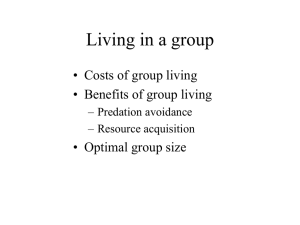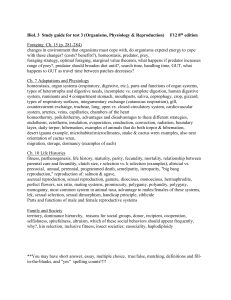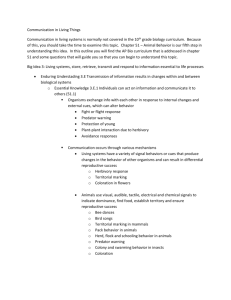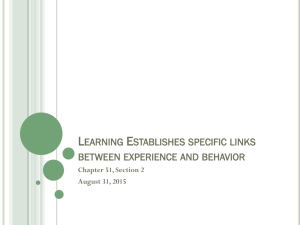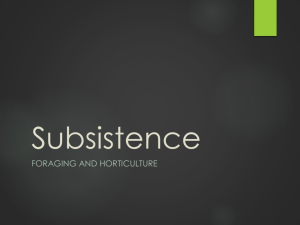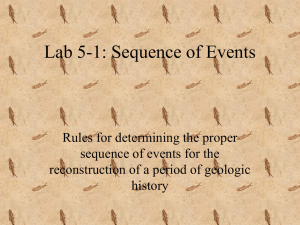ele12293-sup-0002-AppendixS2
advertisement
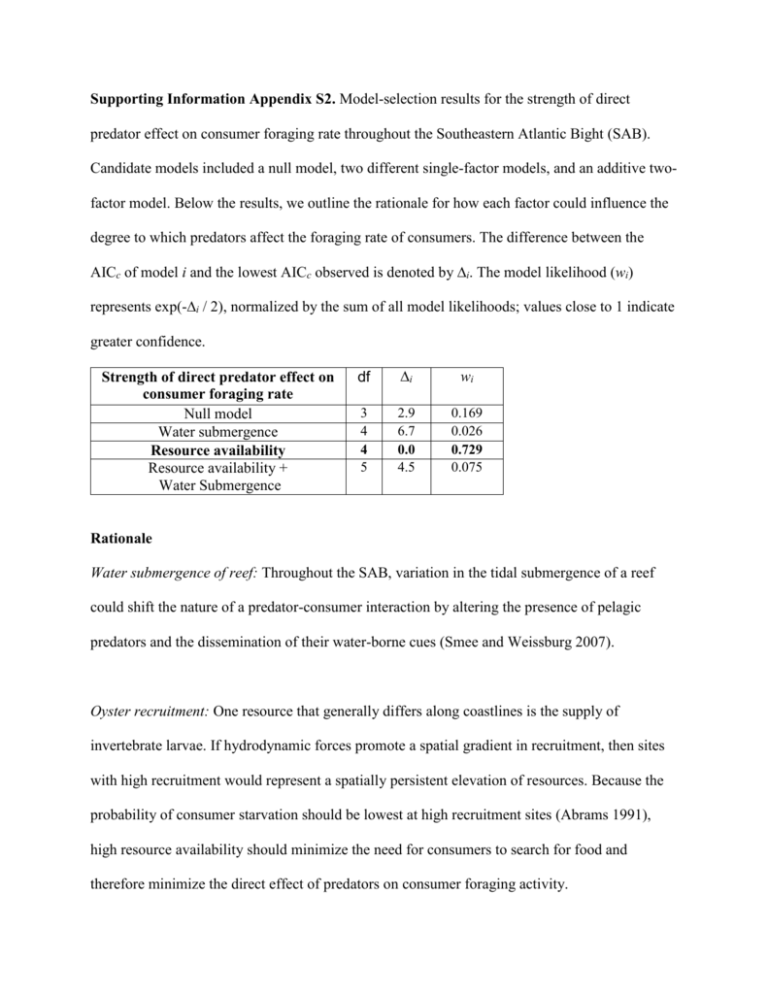
Supporting Information Appendix S2. Model-selection results for the strength of direct predator effect on consumer foraging rate throughout the Southeastern Atlantic Bight (SAB). Candidate models included a null model, two different single-factor models, and an additive twofactor model. Below the results, we outline the rationale for how each factor could influence the degree to which predators affect the foraging rate of consumers. The difference between the AICc of model i and the lowest AICc observed is denoted by ∆i. The model likelihood (wi) represents exp(-∆i / 2), normalized by the sum of all model likelihoods; values close to 1 indicate greater confidence. Strength of direct predator effect on consumer foraging rate Null model Water submergence Resource availability Resource availability + Water Submergence df ∆i wi 3 4 4 5 2.9 6.7 0.0 4.5 0.169 0.026 0.729 0.075 Rationale Water submergence of reef: Throughout the SAB, variation in the tidal submergence of a reef could shift the nature of a predator-consumer interaction by altering the presence of pelagic predators and the dissemination of their water-borne cues (Smee and Weissburg 2007). Oyster recruitment: One resource that generally differs along coastlines is the supply of invertebrate larvae. If hydrodynamic forces promote a spatial gradient in recruitment, then sites with high recruitment would represent a spatially persistent elevation of resources. Because the probability of consumer starvation should be lowest at high recruitment sites (Abrams 1991), high resource availability should minimize the need for consumers to search for food and therefore minimize the direct effect of predators on consumer foraging activity.
